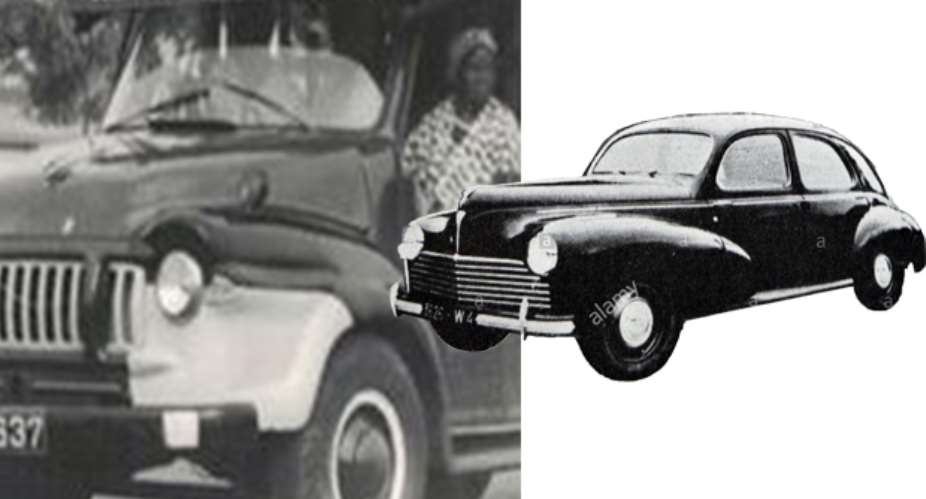The vehicles which plied the roads of the Gold Coast reflected our colonial links to Britain.
Most of the vehicles imported into the country by trading conglomerates such as the United Africa Company (UAC), Union Trading Company (UTC), Staveley and John Holt Batholomew were from Britain.
Chevrolets, Pontiacs, Buicks and Oldsmobile were American cars which were patronised by the very rich in society.
The only and the first Lincoln car to be imported into the Gold Coast was owned by a certain IMP Brimah and Accra business owner who was also a leading member of the elitist Accra Turf Club.
Staveley owned the franchise for the Commer brand of vehicles.
The Gold Coast Police used this vehicle a lot to convey the escort policemen for anti-riot duties among others.
Most of the lorries used to transport passengers were brought into the country in their cowl form. The part of the vehicle used to carry cargo and even passengers were made of wood and took several days to complete.
Kumasi was the favourite place for the construction of the wooden part of such vehicles.
It was not difficult to determine why Kumasi was the home of such carpentry work. Being in the heart of the hardwood from the nearby rainforest, it was cheaper to have this work done on the cowl and chassis.
Both the police and the military used British vehicles. The famous British Landrovers were used by both the Royal West African Frontier Force's Gold Coast Regiment and the Police.
The Bedford was the Army's lorry and for those who remember it, this military vehicle specially made for soldiers had on the top of the opening from which a soldier with his weapon could stand. This vehicle earned for itself the name 'Abongo.'
UAC with its British link imported all Bedford trucks as well as the Albions and Leylands.
The Albions and Leylands were especially suited for the tropics. Indeed, there are a few of them still being operated in some parts of the country even at their advanced ages.
It would appear that their owners have perfected the art of improvisation because these vehicles are no longer being produced.
Some of the early drivers in the Gold Coast came from Labadi in Accra. It is unsurprising that this part of Accra is home to some of these vehicles which of course have seen better years.
Albions and Leylands can still be found in Labadi, some of them carting containers laden with goods from the harbour.
The Bedfords came in different weights such as the one and half tonners, three tons, seven and half tons.
The Albion did not have such variations as well as the Leyland. There was also on the Gold Coast roads and later Ghana, another vehicle which served this country for long. The Thames Trader was of course a British truck, the first name saying it all about its origin.
Kumasi was the base of the transport ownership in the country, with most of the businessmen whose lorries crisscrossed the country with goods. One famous transporter owner in the Garden City was called Yaw Frimpong, his vehicles bearing his initials of YF.
In the Zongo community in the Ashanti Regional capital was a man called Garba Karami, a wealthy man with many lorries, most of them Bedfords and Albions.
The British brands also included the Austin and Morris.
UTC also imported the famous MAN Diesel, an important brand on the Gold Coast and the Ghanaian roads. The German brand Henschel was another respected lorry in the country.
Some of these pulled along what were called trailers used for additional goods and sometimes livestock from the Northern Territories.
In the saloon car category, there were cars such as Humber, Hillman, Morris, Morris and Wolseley.
Other favourite cars from Britain were Zodiacs, Zephyrs 4 and 6 and the Prefect.
The SCOA Motor Department with branches throughout the Gold Coast sold the Peugeot 203 and other brands.
The 203, which preceded others like the 404 and others, sold for six hundred pounds for the Saloon and seven hundred pounds for the Family Estate.
By A.R. Gomda





 Lay KPMG audit report on SML-GRA contract before Parliament – Isaac Adongo tells...
Lay KPMG audit report on SML-GRA contract before Parliament – Isaac Adongo tells...
 Supervisor remanded for stabbing businessman with broken bottle and screwdriver
Supervisor remanded for stabbing businessman with broken bottle and screwdriver
 NDC watching EC and NPP closely on Returning Officer recruitment — Omane Boamah
NDC watching EC and NPP closely on Returning Officer recruitment — Omane Boamah
 Your decision to contest for president again is pathetic – Annoh-Dompreh blasts ...
Your decision to contest for president again is pathetic – Annoh-Dompreh blasts ...
 Election 2024: Security agencies ready to keep peace and secure the country — IG...
Election 2024: Security agencies ready to keep peace and secure the country — IG...
 People no longer place value in public basic schools; new uniforms, painting wil...
People no longer place value in public basic schools; new uniforms, painting wil...
 'Comedian' Paul Adom Otchere needs help – Sulemana Braimah
'Comedian' Paul Adom Otchere needs help – Sulemana Braimah
 Ejisu by-election: Only 33% of voters can be swayed by inducement — Global InfoA...
Ejisu by-election: Only 33% of voters can be swayed by inducement — Global InfoA...
 Minority will expose the beneficial owners of SML, recover funds paid to company...
Minority will expose the beneficial owners of SML, recover funds paid to company...
 Prof. Opoku-Agyemang has ‘decapitated’ the NPP’s strategies; don’t take them ser...
Prof. Opoku-Agyemang has ‘decapitated’ the NPP’s strategies; don’t take them ser...
